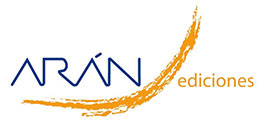Trabajo Original
Protection by polyphenol extract from olive stones against apoptosis produced by oxidative stress in human neuroblastoma cells
Ernesto Cortés-Castell, Carmen Veciana-galindo, Luis Torró-montell, Antonio Palazón-Bru, Elia Sirvent-Segura, Vicente Gil-guillén, Mercedes Rizo-baeza
 Número de descargas:
28765
Número de descargas:
28765
 Número de visitas:
8985
Número de visitas:
8985
 Citas:
4
Citas:
4
Compártelo:
Objective: We evaluated the protective activity of an extract from a by-product such as olive stones, through its ability to inhibit H202 induced apoptosis in the SH-SY5Y human neuroblastoma cell line.Material and methods: To such end, 20,000 cells/well were cultivated and differentiation with retinoic acid was initiated. Once the cells were differentiated, apoptosis was induced with and without H2O2 extract. Finally, cDNA extraction was performed, and pro-apoptotic genes Bax and anti-apoptotic genes Bcl-2 were analyzed. Quantification of the gene expression was performed using the GAPDH gene marker.Results: Cell viability with the extract is 97.6% (SD 5.7) with 10 mg/l and 62.8% (SD 1.2) to 50 mg/l, using 10 mg/l for the biomarker assay. The retinoic acid differentiated SH-S cell line (10 μM) shows a clear apoptosis when treated with H2O2 150 μM, with a Bax/Bcl-2 ratio of 3.75 (SD 0.80) in contrast to the differentiated control cells subjected to H2O2 and with extract, which have the same ratio of 1.02 (SD 0.01-0.03).Conclusion: The olive stone extract shows anti-apoptotic activity in the provoked cell death of SH-SY5Y human neuroblastoma cells in their normal state, defending them from oxidative stress which produces a significant increase in the apoptotic gene ratio in contrast to anti-apoptotic genes (Bax/Bcl-2).
Palabras Clave: Polyphenols; Olive stones; Apoptosis; Human neuroblastome cells
DOI: 10.1007/s11883-013-0324-x
DOI: 10.1046/j.1475-1313.2003.00130.x
DOI: 10.1093/ajcn/84.4.880
DOI: 10.1016/j.foodchem.2006.10.005
DOI: 10.3390/molecules14051762
DOI: 10.1021/tx8004168
DOI: 10.1016/S0024-3205(01)01218-8
DOI: 10.1097/01.cej.0000130221.19480.7e
DOI: 10.1016/S0899-9007(02)00949-8
DOI: 10.1016/j.freeradbiomed.2004.12.015
DOI: 10.1016/0049-3848(95)00043-7
DOI: 10.1128/AAC.48.12.4892-4894.2004
DOI: 10.1016/j.abb.2010.03.016
DOI: 10.1016/j.neuro.2008.11.001
DOI: 10.1016/j.ejphar.2007.01.089
DOI: 10.1016/j.ejphar.2008.06.071
DOI: 10.4196/kjpp.2009.13.4.281
DOI: 10.1016/j.npep.2010.08.004
DOI: 10.1023/A:1007614613771
DOI: 10.1002/jnr.20976
DOI: 10.1016/0014-4827(61)90033-7
DOI: 10.1016/0092-8674(93)90509-O
DOI: 10.1126/science.281.5381.1322
DOI: 10.1016/j.phrs.2010.06.004
DOI: 10.1089/10430340252837251
DOI: 10.1523/JNEUROSCI.18-10-03563.1998
DOI: 10.1073/pnas.96.4.1704
DOI: 10.1097/00001756-200312190-00025
DOI: 10.1523/JNEUROSCI.2057-04.2004
DOI: 10.1038/nrn1078
DOI: 10.1111/j.1471-4159.2004.02904.x
DOI: 10.1016/j.phymed.2011.05.010
Artículos Relacionados:
Trabajo Original: Diet and liver apoptosis in rats: a particular metabolic pathway
Maria Emilia Lopes Monteiro , Analucia Rampazzo Xavier , Vilma Blondet Azeredo
Trabajo Original: Beneficios de los polifenoles contenidos en la cerveza sobre la microbiota intestinal
Isabel Moreno Indias
Revisión: El papel del resveratrol sobre el estrés oxidante inducido por metales pesados
Tonancy Nicolás-Méndez , Alda Rocío Ortiz-Muñiz , Víctor Manuel Mendoza-Núñez , María del Carmen García-Rodríguez
Trabajo Original: Altered membrane lipid dynamics and chemoprevention by non-steroidal anti inflammatory drugs during colon carcinogenesis
Revisión: Los polifenoles, compuestos de origen natural con efectos saludables sobre el sistema cardiovascular
Revisión: Antitumor effect of oleic acid; mechanisms of action. A review
Revisión: Compuestos polifenólicos y capacidad antioxidante de especias típicas consumidas en México
Trabajo Original: Nori- and Sea spaghetti- but not Wakame-restructured pork decrease the hypercholesterolemic and liver proapototic short-term effects of high-dietary cholesterol consumption
Trabajo Original: Efectos sobre el perfil lipídico en humanos de un extracto de algarroba (ceratonia siliqua L.) rico en polifenoles, incluido en un lácteo como alimento funcional; estudio piloto
Trabajo Original: Evaluación de la citotoxicidad y bioseguridad de un extracto de polifenoles de huesos de aceitunas
Trabajo Original: Actividad antiinflamatoria de un extracto polifenólico de hueso de olivas en la línea celular de monocitos humanos THP1-XBLUE-CD14
Trabajo Original: Efecto sobre el neurodesarrollo y neuroprotección en pez cebra de un extracto polifenólico de huesos de aceituna
Revisión: ¿Son efectivos los suplementos antioxidantes en la disminución del dolor muscular tardío? Una revisión sistemática
Revisión: Efecto de los polifenoles del vino sobre la prevención del cáncer
Trabajo Original: Effect of the intake of liquids rich in polyphenols on blood pressure and fat liver deposition in rats submitted to high-fat diet
Trabajo Original: Anti-adipogenic activity of an olive seed extract in mouse fibroblasts
Trabajo Original: Effect of long term intake of white tea on acute oxidative stress in rats
Trabajo Original: Dietary ratios of n-6/n-3 polyunsaturated fatty acids during maternal pregnancy affect hippocampal neurogenesis and apoptosis in mouse offspring
Revisión: Efectos del té verde en el estado nutricional del ejercicio físico; revisión sistemática
Trabajo Original: Antigenotoxicidad de la isoflavona de soya genisteína en ratones expuestos a compuestos cancerígenos del cromo hexavalente
María del Carmen García-Rodríguez , Gabriela Abigail Valle-Castillo , Lourdes Montserrat Hernández-Cortés
Trabajo Original: Association of coffee intake and its polyphenols with mammographic findings in women who visited the Brazilian Public Health Service
Ayana Florencio de Meneses , Ana Luiza de Rezende Ferreira Mendes , Daianne Cristina Rocha , Helena Alves de Carvalho Sampaio , Antônio Augusto Ferreira Carioca , Luis Gonzaga Porto Pinheiro , Paulo Henrique Diógenes Vasques , Ilana Nogueira Bezerra , Leandro Teixeira Cacau
Trabajo Original: Diseño y validación de un cuestionario autorreportado de frecuencia de consumo de polifenoles aportados por la dieta
Carla Guzmán Pincheira , Fernanda Fierro Jara
Revisión: Nutrición y microbiota
Francisco José Tinahones Madueño
Artículos más populares
Revisión: Inteligencia artificial generativa ChatGPT en nutrición clínica: avances y desafíos
ChatGPT y otras herramientas de inteligencia artif...
Revisión: Suplementación con micronutrientes y sus beneficios: ¿por qué y cuándo?
Introducción: los micronutrientes participan en la...
-
Licencia creative commons: Open Access bajo la licencia Creative Commons 4.0 CC BY-NC-SA
https://creativecommons.org/licenses/by-nc-sa/4.0/legalcode




